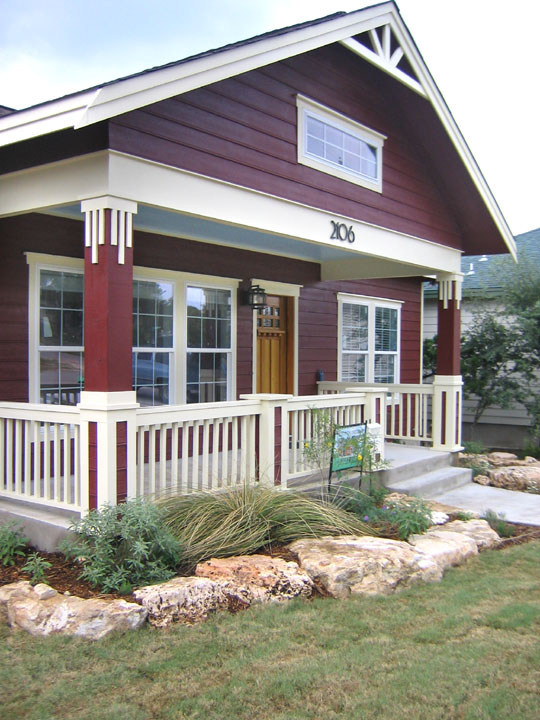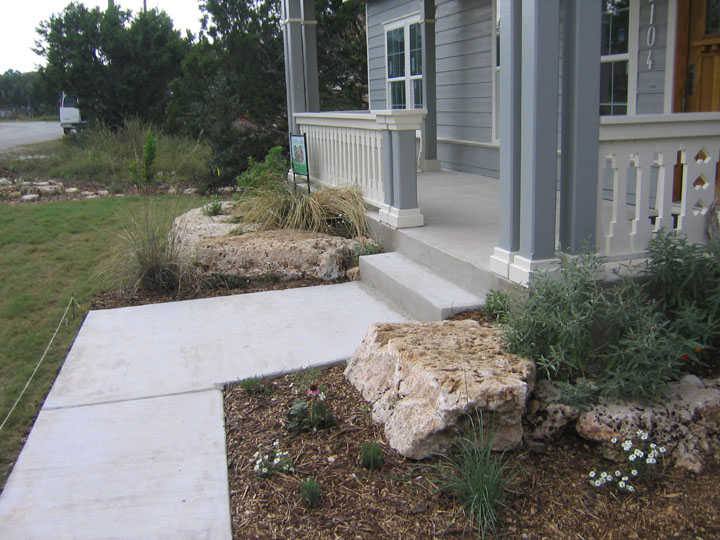

AWARD WINNING NATIVE LANDSCAPING*
(The No Mow Garden)
Cherish the natural environment. Understand its rhythms and complexities. Try and emulate nature as much as possible. Understand the value of natural techniques. Observe the devastating effects of non-native species.
The gardens that are planted around Indian Creek Homes
are the product of 20 years of study of the natural environment and practice in
landscaping to mimic nature. All of the 55 or so species within these gardens
are native to within a 200 mile radius of this area. The vast majority are
native to within 75 miles. F ully
half of the species are native to within 5 miles of the site. It is very
important to chose landscaping material carefully, whether you are in a
sensitive ecosystem or not. Careless choices in landscape materials lead to the
escape of unwanted, non-native and exotic species. These plants do not belong in
this environment and displace native species that make this area unique. Vast
areas of urban and suburban green spaces have been severely impacted by
non-native landscaping species. These plants displace all manner of life
normally found in the area including songbirds, butterflies, reptiles, birds of
prey, many species of mammals and even beneficial insects.
ully
half of the species are native to within 5 miles of the site. It is very
important to chose landscaping material carefully, whether you are in a
sensitive ecosystem or not. Careless choices in landscape materials lead to the
escape of unwanted, non-native and exotic species. These plants do not belong in
this environment and displace native species that make this area unique. Vast
areas of urban and suburban green spaces have been severely impacted by
non-native landscaping species. These plants displace all manner of life
normally found in the area including songbirds, butterflies, reptiles, birds of
prey, many species of mammals and even beneficial insects.
Why plant Chinese, Mediterranean or even northeastern North American plants when so many local materials are available that are much more appropriate.
These gardens are no-mow landscapes. Or they can be if you treat them appropriately. That doesn't mean "no maintenance". Award winning landscapes such as these typically require a lot more maintenance initially than traditional intensive landscaping. The benefit in maintenance comes down the path as the gardens mature, and environmentally - the benefits of a low impact ecosystem enhancing landscape on the environment are immediate. See the Maintenance links below for gardening tips.
Environmental Benefits of Native Gardens
The use of truly native plants requires less fertilizer, less water, less pesticides and usually much less attention than exotic species. This is of great advantage to the environment. Not only as a reduction in unwanted and usually toxic or hazardous materials, but also in the unintended side effects of beneficial insect mortality, aquifer and waterway nutrification, native species displacement and even the unwanted mortality of birds and mammals (not to mention human exposure to toxic elements).
Social Benefits of Native Landscapes
In this era when homogeneity is rank all around us, native ecosystems provide uniqueness in a geographic area. Isn't that why we value some particular thing more than something else? Because of its unique qualities? Why landscape out homes and businesses in our cherished hill Country with Japanese honeysuckle and Chinaberry? Or other highly invasive Mediterranean or far east species such as nandina, red-tipped photinia and wax-leafed ligustrum? Let's keep Austin Austin. Use and advocate native plants.
Rocks
Do you like the rocks in
the Hill Country? All of the rocks at Indian Creek Homes are recycled from rocks
displaced on the property during construction. Some of these rocks weigh more
than a small car. Some of these rocks are so big that they have individual
personalities.
 These particular rocks are classified as Glenrose geology. The
Glenrose formation is the classic stair-stepped geology common in much of the
Hill Country. This formation is characterized by flatter stair-step like areas
that are 20 to several hundred feet wide interspersed by steeper shorter
sections of hillside.
These particular rocks are classified as Glenrose geology. The
Glenrose formation is the classic stair-stepped geology common in much of the
Hill Country. This formation is characterized by flatter stair-step like areas
that are 20 to several hundred feet wide interspersed by steeper shorter
sections of hillside.
The holes found in most of the rocks on site are natural to some of the limestone in the Hill Country. They are formed as rainwater percolates through the soil down to the rocks where the water slowly dissolves the limestone - the same way that caves are formed. Except, these holes are not called caves. They are described as vuggy by geologist - which means, full of holes. Many of the plant species in the Hill Country just love growing out of vuggy rocks. Sometimes it seems impossible that such large plants can grow in such little holes in the solid rock. But they are all over the Indian Creek Home lots.
Soil
The soil in any garden is very important to the plants. Even non-gardeners can tell you that. But today, most landscaping soil for traditional home development comes from pits in the ancient riverbed of some river system. These soils are generally very poor for just about anything, much less growing plants. They are very easily erodible - quickly washing into our streams and rivers creating havoc in the natural ecosystem. Plants grown in these soils require constant fertilization because they don't have any nutrients built into them, nor do they have those beneficial qualities of good landscaping soil that allows them to retain nutrients from the decomposition of organic material. Typically builders and landscapers call these soils sandy loam or loam. In the award winning gardening world they are called "the red death".
Soils at the Indian Creek Homes were saved and recycled from the Indian Creek Homes site and from other developments in the surrounding area. The soils that were saved from other sites were actually on their way to the landfill as trash.
The following links are a primer to the care and feeding of an award winning native landscape:
Click on the thumbnails below to view larger photos of the Indian creek landscapes: